#lgbt historical
Text
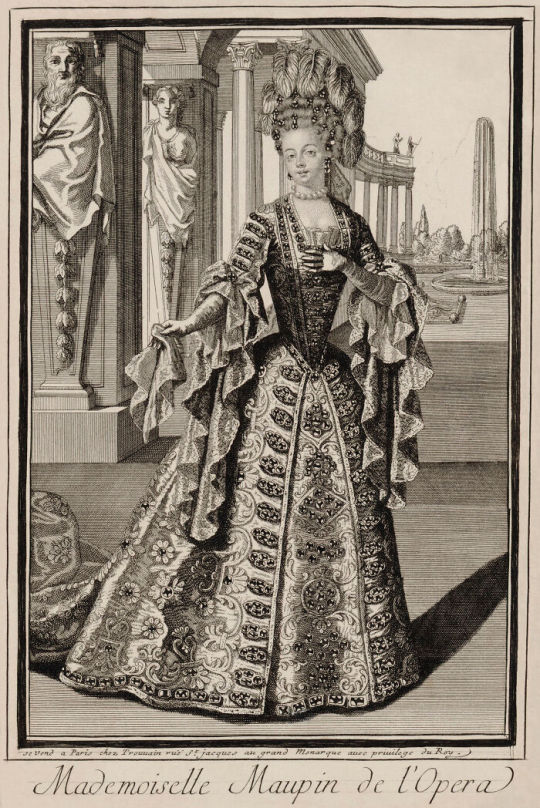
Julie D'Aubigny
A 17th-century French fencing master and pretty famous opera singer. Also a bisexual woman.
Killed or wounded at least ten men in life-or-death duels.
Her girlfriend got send by her family to become a nun for being lesbian, so Julie took the Holy Orders, burned down the convent and faked her and her girlfriend's deaths.
#women#sapphic#lgbt#history#lgbt history#opera singer#historical figures#lgbt historical#lesbian#bisexual women#wlw#nuns#lesbian nun#church#fellas its gay to burn down a convent?#lesbians#bisexual#bi women#gay women#lgbt women#french#french gays#french women#french history#be gay burn the church#be gay fake your gf death#be gay do crimes#badass women#love#julie d'aubigny
22 notes
·
View notes
Text

putrid air
#reference photo/inspo is by brendan burton (@burtoo on twt)#original character#digital painting#oc artist#queer artist#digital art#trans artist#lgbt art#oc#oc artwork#cowboy oc#historical oc#western oc#historical fiction#character design#cowboys#rosie#horror art#creepy art#unsettling art
42K notes
·
View notes
Text
I just discovered that there was a person who was afab and ended up joining the russian army by the name of Alexander Durov in 1806.
Born a woman, Nadezhda Durova (birth name) ran away from home and joined a light cavallery regiment dressed as a man.
After his identity was uncovered, the russian tsar summoned him to the palace at St. Petersburg, where he impressed the tsar so much that he awarded Durov the Cross of St. George and promoted him to lieutenant in a hussar unit.
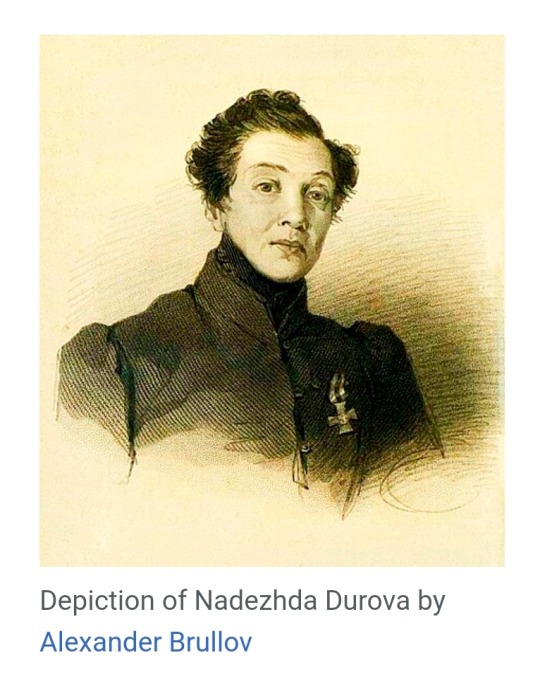
He always referred to himself as a man and was upset when people called him a woman.
He signed letters with his male last name.
He expressed feelings of disgust towards his sex and how that worried him a lot.
He never married willingly and adopted many dogs and cats.
He only danced with women when attending a ball.
He asked to be buried under his male name Alexander Andreevich Alexandrov but the church did not agree to that.
I never saw him in "historical transmasculine people" compilations and only discovered his story coincidentally.
Unfortunately, historians still adress him with female pronouns, although he did not want that.
Let's remember him together. We won't allow him to be forgotten.
I'll probably add onto this post later or make a better one but you can read a lot on this wikipedia article:
#transmasc#trans#transgender#trans history#lgbt history#lgbt russia#лгбт#лгбт история#transmasculine#trans man#historical gays#lgbtqia#lgbtq community
8K notes
·
View notes
Text


Frede (Suzanne Baulé) (deceased)
Gender: Female
Sexuality: Lesbian
DOB: 8 November 1914
RIP:13 February 1976
Ethnicity: White - French
Occupation: Entrepreneur, bar owner
Note: Frede was the first to allow women to dance together in a classic cabaret.
#Frede#Suzanne Baulé#Suzanne Baule#lgbt history#lgbt#lgbtq#wlw#lesbian history#lesbianism#female#lesbian#1914#rip#historical#white#french#entrepreneur#first#tw smoking#popular#popular post#200
337 notes
·
View notes
Text
Once you start looking, you see queer presentism everywhere. It pops up when politicians espouse our “unprecedented” ability to love who we love, and when recent book bans are said to “roll back the clock” on LGBTQ+ rights, implying that clocks tick continually toward progress. It manifests in Oscar Wilde hagiography, which elevates him to the status of singular queer martyr and extrapolates an epochal paradigm from his 1895 trials. It seeps into our everyday speech, in our references to “forbidden love” and our use of the term “Victorian” to imply prudish homophobia. It both stems from and structures the editorial projects that publishers pursue, giving rise to catalogues like the NYRB Classics, where the oldest work tagged LGBTQ+ is Colette’s The Pure and the Impure (1932) — as if nothing queer was written before.
The truth is that there’s a world of queer writing that predates Colette, volumes of manuscript and books that aren’t so much products of historical suppression as they are suppressed by today’s “it’s gotten better” mindset. This is convenient for a culture industry in search of the sui generis and always eager to pat itself on the back for its own enlightenment. But the almost total neglect, outside the academy, of the queer literary archive is a shame, and not only because it propagates factual errors. In limiting our horizons for understanding how our predecessors lived, loved, and wrote, we end up narrowing our own vistas. When we apply the repressive hypothesis, we’re actually repressing ourselves.
Colton Valentine, “Against Queer Presentism | How the Book World Neglects the Archive,” The Drift, October 25, 2022.
#reading#this probably gives the wrong impression of the piece itself which does a lot of really interesting work critiquing modern queer literature#as failing to understand the historical existence of lgbt people BUT these two paragraphs seem like the easiest to isolate and I really like#the work they are doing!!!!! sorry Colton valentine I love the whole piece. maybe I’ll make another post
3K notes
·
View notes
Text
You want to know a LGBTQ+ historical fact that is not centered in the US?
In 2018 the Federal Psychology Council in Brazil stopped classifying being trans as a disorder and it became illegal to promote any type of conversion therapy to trans people.
725 notes
·
View notes
Text

"The faggots and their friends live the best while empires are falling. Since the men are always building as many empires as they can, there are always one or two falling and so one or two places for the faggots and their friends to go. When an empire is falling, the men become so busy opposing the rebellions elsewhere and searching for the reasons why this is happening, that they have no time to watch the faggots and their friends at home. The populace, tired of hearing only of foreign defeats, allows the faggots room to play. This entertains them. Once the empire is gone, the cause of the present evil must be found. And the faggots and their friends along with others often get chosen. Then times get bad and the faggots and their friends fade."
The Faggots & Their Friends Between Revolutions, Larry Mitchell (1977)
#hmm sounds familiar#the faggots and their friends between revolutions#the Larry Mitchell#gay lit#queer lit#gay history#queer history#lgbt+ lit#lgbtq+ lit#lgbt+ history#vintage gay lit#historic gay lit
634 notes
·
View notes
Text
The flower bloomed and faded. The sun rose and sank. The lover loved and went. And what the poets said in rhyme, the young translated into practice.
- Virginia Woolf, Orlando
#quotes#books#literature#lit#classics#academia#light academia#dark academia#chaotic academia#book#book quotes#quotation#Virginia Woolf#Orlando#Historical Fiction#Queer#LGBT+#Fiction#Fantasy
274 notes
·
View notes
Text

Truth, Melbourne, March 6, 1976.
#1970s#women#*#old photos#historical lesbians#australia#lesbianism#wlw#couple#newspaper#relationship#marriage#lgbt history#70s#60s 70s 80s 90s#vintage#vintage newspapers#old newspaper#lesbians#lesbian#historical sapphists#sapphic#lesbian history#history
154 notes
·
View notes
Text

babe wake up old gender just dropped
593 notes
·
View notes
Text


illustration for class about transness, the divine alchemy of the self and the bravery of coming out
ko-fi
#lgbt art#artists on tumblr#trans pride#trans art#trans positivity#my art#painting#ft. the uranian symbol and grapes and butterflies because we love our throwbacks to historical trans identity#anyway this ended up being very personal to me and i had to write a whole paper to present to my class and it was quite nervewracking
2K notes
·
View notes
Text
LGBT+ Victorians
Since it's Pride Month and Dracula Daily is going to be pretty quiet for most of June, I thought it might be good timing for a little 1890s queer history. Plus I wanted to give a bit more fuel to everyone's queer headcanons for Dracula characters!
Popping this under a cut because it's long.
The start of queer identity
This is a massive generalisation, but for most of British history, being queer was about action and not about identity. The idea that people who wanted to have gay sex belonged to a specific group that was different to other people didn't exist for the most part, at least not at a societal level. (This was also true - more generalisation - for much of the western world. It was very much not true for large swathes of the rest of the world who thought about this in entirely different and varied ways).

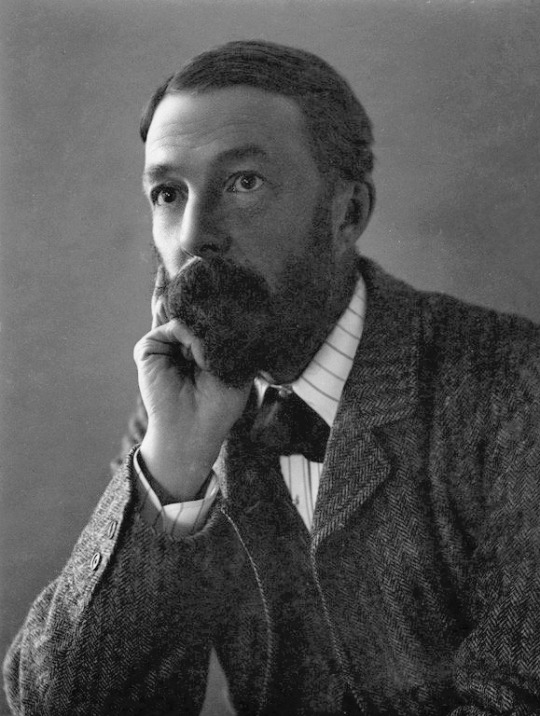
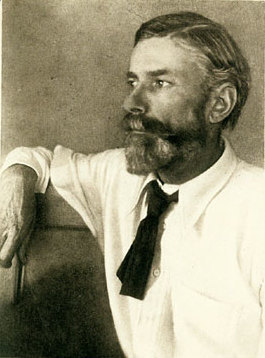
By the second half of the 19th century, that was starting to change. People like Karl Heinrich Ulrichs in Germany (on the left), and John Addington Symonds (middle) and Edward Carpenter (right) in the UK started to think of themselves as homosexuals - Ulrichs coined the term "Urning" which became "Uranian" in English. This period marked the beginning of organised campaigning for LGBT rights in the UK, though specific campaigning for lesbian and trans rights came later.
This means that in the 1890s setting of Dracula, any characters might think of themselves as "Uranian" or "Sapphic", or they might not yet have picked up that way of thinking. At a guess I'd expect Seward or van Helsing to be particularly aware of the new theory around homosexuality.
LGBT rights in law
It was a mixed time for the legal position of LGBT people. The death penalty for sodomy was abolished in 1861 in England, Wales and Ireland (1889 in Scotland), and replaced with minimum 10 years hard labour. In 1871, two amab people, Boulton and Park, were tried for dressing as women, but the judge ruled that this was not an offence under English law (though he also said that he thought it should be).
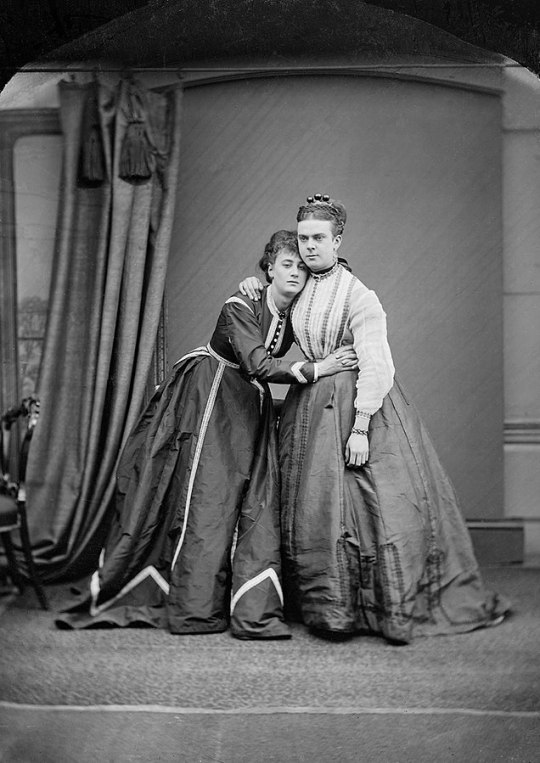
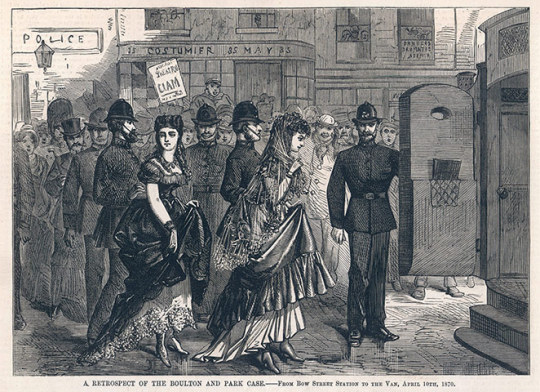
On the left: Fanny Park and Stella Boulton; on the right, the Illustrated Police News' depiction of their arrest.
And in 1885, the Criminal Law Amendment Act reduced the minimum sentence for gross indecency from 10 years' hard labour to two.
That said, before that act was introduced, there had to be a witness to any sodomy or gross indecency for it to be prosecuted. The Criminal Law Amendment Act changed that, so all private acts, arguably even love letters, could be prosecuted. So despite the reduction in sentences, this change to the law made life harder for queer men in the 1880s and 1890s. From a Dracula perspective, this means that people would be much more careful about what they wrote down - significant for a novel made up of documents.
Lesbian sex has never been illegal in the UK. (The idea that this was because Queen Victoria didn't believe in lesbianism is a myth). But in the 18th century there were a series of prosecutions of afab people who lived as men and married women. They were prosecuted for fraud when their birth sex was discovered, because they were perceived as having defrauded their wives. There were far fewer such prosecutions in the 19th century, possibly because of the belief that it was better not to create the publicity of a trial.
Victorian WLW
There are HEAPS of notable Victorian lesbians and bisexual women, including a lot in the suffragette movement. So I've chosen a few examples based on there being good images on Wikipedia.
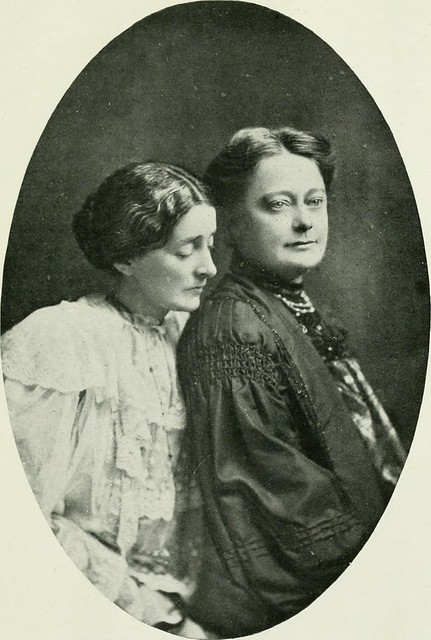


From left to right:
Margaret Benson and Janet (Nettie) Gourlay were Egyptologists who met at the excavation of the Precinct of Mut. Almost all of Benson's family preferred same-sex relationships.
Louisa Baring, Lady Ashburton, was briefly married to a man, but when she was widowed, began a 25-year relationship with American sculptor Harriet Hosmer. Harriet described herself as Louisa's "hubby".
Matilda Hays was a mixed-race writer and actress who had a relationship with American actress Charlotte Cushman, with whom she's pictured. Hays aimed to use her writing to improve the condition of women.
Victorian MLM
Again, I've chosen people to highlight through the very representative method of good photos.
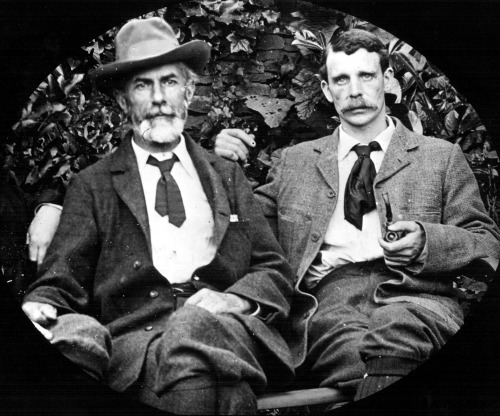
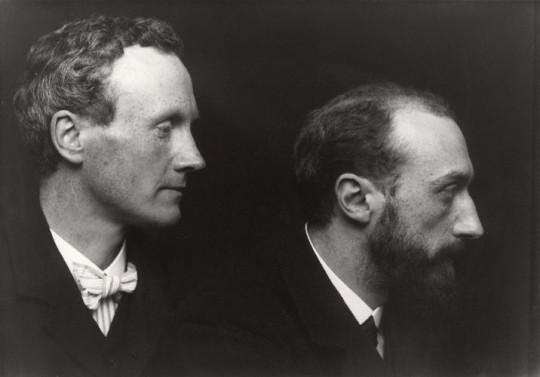

From left to right:
Edward Carpenter was a socialist, poet, philosopher and early gay rights activist who met his partner George Merrill on a train. The two men came from very different backgrounds: Carpenter from privilege, and Merrill from the Sheffield slums. Their 40-year relationship inspired the ending of EM Forster's novel Maurice.
Charles Ricketts and Charles Haslewood Shannon were artists who met as teenagers and lived together for more than 50 years. In the Times' obituary for Ricketts in 1931, their relationship was described as being "as remarkable as any of the great historic friendships, or the finest Darby and Joan examples of wedded felicity".
Ned Warren and John Marshall were art collectors who together were largely responsible for the Roman and Greek Art Collection of the Boston Museum of Fine Arts and the Metropolitan Museum of Art. Marshall married Warren's cousin, Mary Bliss, but only on the condition that the marriage would not be consummated. All three lived together until they died and were buried in the same tomb.
Trans Victorians
I wrote last year about Dr James Barry, a Victorian trans man, in the context of whether Jack Seward could be trans. (The post is from October, but spoiler free).
Eliza Edwards was an actress who died in 1833 at the age of 24. Her body was autopsied, and discovered to be - in the words of the autopsy - "a perfect man", which had apparently not been known to any of her friends or colleagues.
Harry Stokes was a bricklayer in Manchester, who was outed as trans in newspaper articles during his divorce 1838 and again after his death in 1859. He became something of a figure of fun after being first outed, but met another woman who lived with him as his life, and was broadly accepted by the local community as a trans man.
It was only through chance that James, Eliza and Harry were outed (and in James Barry's case, despite considerable efforts on his part). There might well have been hundreds or thousands more people like them.
And Boulton and Park, who I mentioned above, have usually been treated as transvestite men by historians, but could equally - had they had the terms themselves - be identified as trans women. Some contemporary newspaper articles even used she/her pronouns for them.
Asexual Victorians
Asexuality is tricky to spot in history, though even in 1896, German sexologist Magnus Hirschfeld was identifying it as a distinct phenomenon. What we do know is that more than 10% of women and a little under 10% of men in the 1890s never married, and in some cases that may well have been because they were asexual or aromantic.
From a Dracula perspective, family rumour held that Florence Stoker declined sex with her husband after the birth of their child. That may or may not have been true (and there's a ring of aphobia to some of the family's claims) but it shows how asexual people might also be found in apparently conventional marriages.
Sources
British Library: A Short History of LGBT Rights in the UK
British Library: A timeline of LGBT communities in the UK
Girlfriends of Dorothy: A Timeline of Lesbian Rights UK 1601 - 2020s (note: the site intends to be trans-inclusive, but genders John Barry as female.)
Open University: Lesbianism and the criminal law of England and Wales
“Constant Companions” and “Intimate Friends”: The Lives and Careers of Maggie Benson and Nettie Gourlay
Sapphic sexuality: lesbian myth and reality in art and sculpture
British Library: Transgender identities in the past
Warp and Weft: The extraordinary life of Harry Stokes
British Academy: Happy Families?
Coitus Interruptus: Sex, Bram Stoker, and Dracula
'Missing person' Florence Stoker added to DIB
751 notes
·
View notes
Text


Lucy Diggs Slowe (deceased)
Gender: Female
Sexuality: Lesbian
DOB: 4 July 1885
RIP: 21 October 1937
Ethnicity: African American
Occupation: Former prof tennis player, professor, activist
Note of firsts: First Black woman to serve as Dean of Women at any American university. Won the national title of the American Tennis Association's first tournament in 1917, the first African-American woman to win a major sports title. First person from her school to attend Howard University.
#Lucy Diggs Slowe#lgbt history#black history#lgbt#lesbian#female#1885#rip#historical#black#poc#african american#athlete#tennis#teacher#activist#first#popular#popular post#300
433 notes
·
View notes
Text
Okay, let's try this again!
On October 10th, we'll be re-launching Historically Queer. We had an issue where the shipping costs weren't set correctly - charging domestic backers way too much and international backers far too little.
Unfortunately, with Kickstarter, you can't fix these things once someone pledges - which makes sense! - so we had to cancel the project and start over.
Please note that with this iteration of the Kickstarter we are not charging shipping costs during the Kickstarter at all. We're going to move to charging actual costs during the BackerKit phase, which should do a few things:
allow us to have lower and more accurate stretch goals bc we don't have to guess how much of the money in the KS is for shipping
keep shipping costs accurate for each backer, rather than hoping we are guessing correctly how much the international postage is coming out to and that it'll all come out in the wash
lower Spider's overall stress levels
allow us to offer different options, such as if people would prefer Priority Mail for large numbers of pins (Priority Mail tracking is better :p)
Domestic backers should see their postage stay about the same - it might go up a little or down a little, but it should be within $2 of what you expected in the past.
But yeah, this should stress Spider out significantly less.
Anyway, you should follow this Kickstarter so you're notified when we launch! :D
354 notes
·
View notes
Text


This is the entire premise of the game. Hugo's "unintentionally" gay thoughts are the sole reason why this game exists.
We had to make it JUST so he can figure it out.
Please figure it out 💀
Of Sense and Soul: A Queer Victorian Romance Game 💌
Follow our Kickstarter (Launching July 12th!)
Play our demo | Get our newsletter
#victorian#historical fiction#historical romance#queer fiction#visual novel#interactive fiction#gay#gay yearning#gay mlm#indie game#historical#1800s#oc art#original character#indie dev#period costume#menswear#history#queer#lgbt fiction#of sense and soul#osas#osas memes
610 notes
·
View notes
Text

Mortal Follies by Alexis Hall
It is the year 1814 and life for a young lady of good breeding has many difficulties. There are balls to attend, fashions to follow, marriages to consider and, of course, the tiny complication of existing in a world swarming with fairy spirits, interfering deities, and actual straight-up sorcerers.
Miss Maelys Mitchelmore finds her entry into high society hindered by an irritating curse. It begins innocuously enough with her dress slowly unmaking itself over the course of an evening at a high-profile ball, a scandal she narrowly manages to escape.
However, as the curse progresses to more fatal proportions, Miss Mitchelmore must seek out aid, even if it means mixing with undesirable company. And there are few less desirable than Lady Georgianna Landrake—a brooding, alluring young woman sardonically nicknamed “the Duke of Annadale”—who may or may not have murdered her own father and brothers to inherit their fortune. If one is to believe the gossip, she might be some kind of malign enchantress. Then again, a malign enchantress might be exactly what Miss Mitchelmore needs.
With the Duke’s help, Miss Mitchelmore delves into a world of angry gods and vindictive magic, keen to unmask the perpetrator of these otherworldly attacks. But Miss Mitchelmore’s reputation is not the only thing at risk in spending time with her new ally. For the rumoured witch has her own secrets that may prove dangerous to Miss Mitchelmore’s heart—not to mention her life.
Genres: historical, urban fantasy, romance
Order from Blackwell's and get free worldwide shipping!
Listen to the book on audiobooks.com here!
119 notes
·
View notes